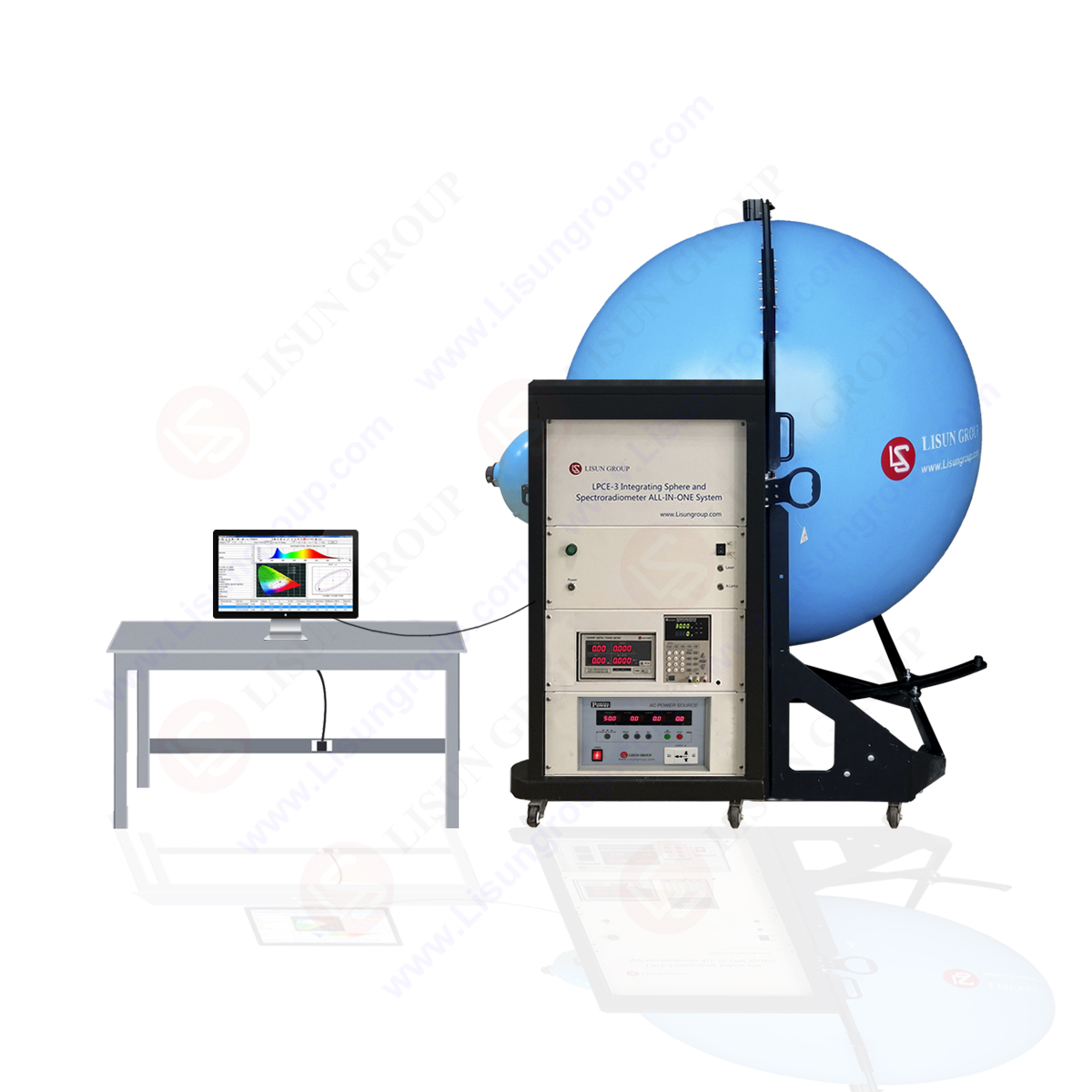Method 2004: Radiation Flux and Radiation Efficiency
1 Objective
Measure the radiation flux and radiation efficiency of the measuring LED device under the rated condition.
2 Test chart
Note: the optical radiation lunched by the measuring LED device has been reflected for many times through the integrating sphere wall, that leads to uniform surface luminosity that is proportion to the luminous flux, one detector located in the integral wall measures this surface luminosity, a diffusing screen wards off the light so as not to allow the detector to directly irradiate the LED radiation of the device under test. The measuring device, diffuse screen, the area of the hole compared to the ball area should be relatively small; the surface of the ball inside and the diffuse screen should have diffuse coating (minimum 0.8) of high reflectivity. The ball and detector combination should be calibrated; the peak emission wavelength and flux should be taken into consideration due to the power consumption of the change.
3 Test procedures
Put the measuring devices on the entrance of the integrating sphere; don’t make the light go directly into the probe. Exert the rated forward current IF on the device being tested, the luminosity detection system then measures out the flux. The luminous efficiency will be obtained by using the flux value to divide the product value of the positive IF and the forward voltage VF.
4 Rated condition
Environment and tube temperature
Forward current
Tags:Radiation Efficiency , Radiation Flux
 中文简体
中文简体






